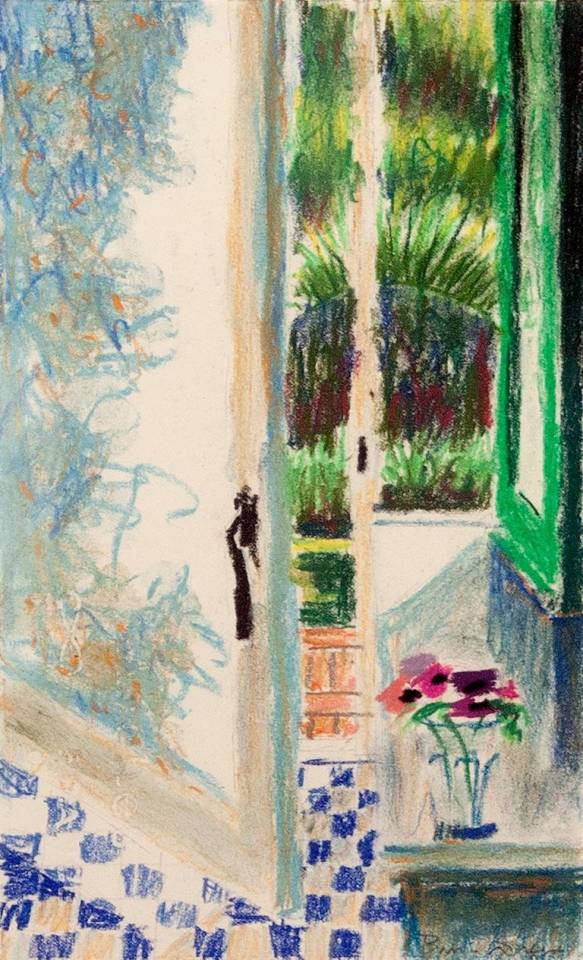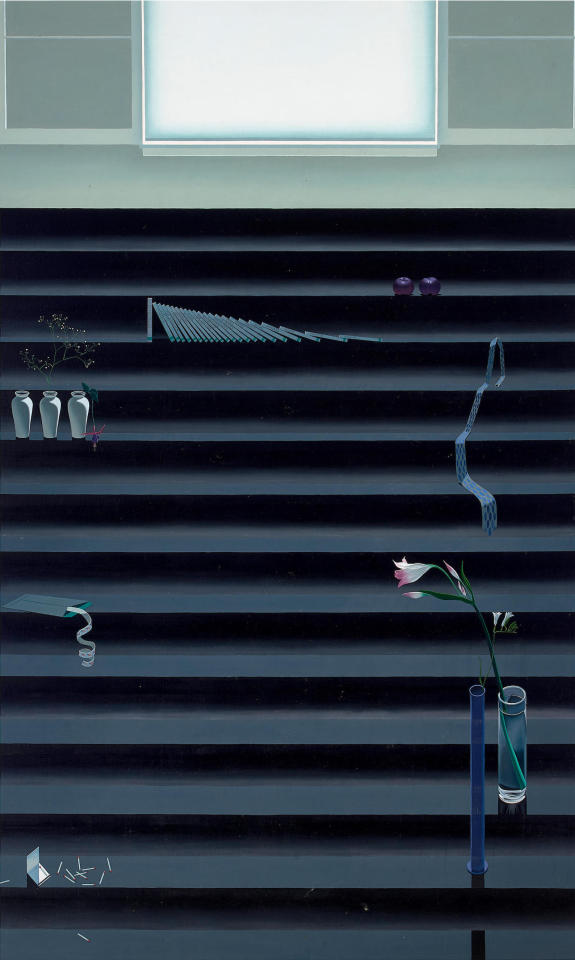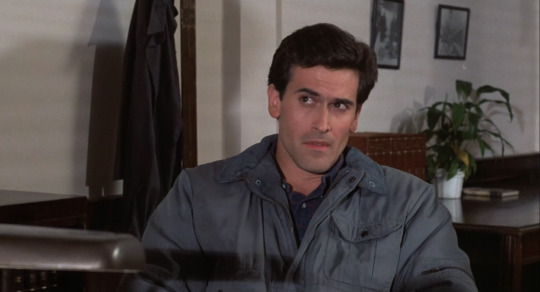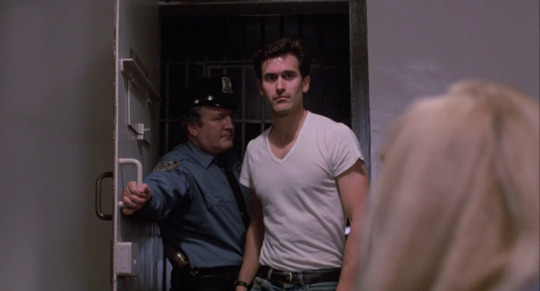#Bruce Cohen
Text

Bruce Cohen (American, 1953), Unmade Bed, 1985. Oil on canvas, 40 1⁄4 x 66 1⁄4 in.
424 notes
·
View notes
Photo

Interior with Anemones and Blue and White Tiled Floor - Bruce Cohen , 2018.
American, b. 1953 -
Pastel on paper , 10.25 x 6.375 in. 26.4 x 16.2 cm.
535 notes
·
View notes
Text

"Daffodils and Blue Chair".
By Bruce Cohen. American. b. 1953-
> bcnmar.tumblr
37 notes
·
View notes
Photo

Bruce Cohen (American, b. 1953)
Narcissus Against Evening Sky, 2013
Oil on canvas
282 notes
·
View notes
Photo

Bruce Cohen
Gender: Male
Sexuality: Gay
DOB: 23 September 1961
Ethnicity: Ashkenazi Jewish
Nationality: American
Occupation: Film, TV and theatre producer, director
51 notes
·
View notes
Photo


A revolutionary. A visionary. A champion of the people. This is a first look at Colman Domingo as Bayard Rustin in RUSTIN.
Directed by George C. Wolfe and produced by Oscar® winning producer Bruce Cohen and Higher Ground’s Tonia Davis.
Hitting Netflix in 2023.
72 notes
·
View notes
Photo

Bruce Cohen. American, b. 1953
3 notes
·
View notes
Photo

MWW Artist of the Day (9/22/22)
Bruce Cohen (American, b. 1953)
Still life with White Pitcher, Lemons and a White Rose (1994)
Oil on canvas, 121.9 x 182.9 cm.
Private Collection
Bruce Cohen is known for engaging his viewers with intriguing interiors in his distinctive, crisp, realist style. Influenced by Dutch still-life painting and Surrealism he orchestrates compositions which include fruit, books, vases and always flowers from his garden. These items are placed in geometric interiors devoid of human beings but haunted by a human presence. Cohen, a native Southern Californian, graduated from the University of California, Santa Barbara. Cohen is represented in public and private collections such as Phillip Morris, New York, Pacific Bell, Los Angeles, the San Diego Museum of Art, and the Solomon R. Guggenheim Museum, New York.
2 notes
·
View notes
Text

Bruce Cohen (American, 1953), Stairs, 1980. Oil on canvas, 68 x 42 in.
352 notes
·
View notes
Photo

Interior with Daffodils and Blue Chair - Bruce Cohen , 2018.
American, b. 1953 -
Pastel on paper , 10 x 6 5/8 in.
169 notes
·
View notes
Text
As a significant "feminised" category of mental illness, however, HPD [histrionic personality disorder] was superseded in the DSM-III by the introduction of the controversial BPD, a label which has been increasingly applied to women, with around 75 per cent of all cases estimated to be female. Seen as a milder form of schizophrenia and lying on the "borderline" between neuroses and psychoses, the concept has been used in psychiatry since 1938. Like other personality disorders, BPD has a notoriously low reliability level even by the generally poor standards of the DSM, and even within the profession is considered by many as yet another "wastebasket" category (though as Bourne ruefully remarks, the ambiguity of such personality disorders makes them particularly useful in policing deviance in the new century). One member of the DSM-III task force stated at the time of constructing BPD that "in my opinion, the borderline syndrome stands for everything that is wrong with psychiatry [and] the category should be eliminated". The chair of the task force, Robert Spitzer, admitted with the publication of DSM-III that BPD was only included in the manual due to pressures from psychoanalytically oriented clinicians who found it useful in their practices. Such practices have been documented by Luhrmann who describes psychiatrists' typical view of the BPD patient as "an angry, difficult woman—almost always a woman—given to intense, unstable relationships and a tendency to make suicide attempts as a call for help.' Bearing significant similarities to the feelings of nineteenth century psychiatrists towards hysterics, Luhrmann's study reveals psychiatrists' revulsion of those they label with a personality disorder: they are "patients you don't like, don't trust, don't want . . . One of the reasons you dislike them is an expungable sense that they are morally at fault because they choose to be different." Becker reinforces this general view of the BPD label when she states that "[t]here is no other diagnosis currently in use that has the intense pejorative connotations that have been attached to the borderline personality disorder diagnosis." A bitter irony for those labelled with BPD is that many are known to have experienced sexual abuse in childhood, something they share in common with many of those Freud labelled as hysterical a century earlier; a psychiatric pattern of depoliticising sexual abuse by ignoring the (usually) male perpetrator, and instead pathologising the survival mechanisms of the victim as abnormal.
By the mid-1980s, the hysteria diagnosis had disappeared from the clinical setting while BPD had become the most commonly diagnosed personality disorder. BPD is now the most important label which psychiatric hegemony invokes to serve capital and patriarchy through monitoring and controlling the modern woman, reinforcing expected gender roles within the more fluid, neoliberal environment. Nevertheless, as Jimenez (emphasis added) reminds us, the historical continuity from hysteria to BPD is clear: "Both diagnoses delimit appropriate behavior for women, and many of the criteria are stereotypically feminine. What distinguishes borderline personality disorder from hysteria is the inclusion of anger and other aggressive characteristics, such as shoplifting, reckless driving, and substance abuse. If the hysteric was a damaged woman, the borderline woman is a dangerous one."
Bruce M.Z. Cohen, Psychiatric Hegemony: A Marxist Theory of Mental Illness
3K notes
·
View notes
Text
#*#music poll#poll#polls#poetry#Bob Dylan#Leonard Cohen#John Lennon#Jim Morrison#Patti Smith#Joni Mitchell#Bruce Springsteen#Lou Reed
495 notes
·
View notes
Photo

Bruce Cohen (American, b. 1953)
Interior of Kitchen and View of the Ocean, 2018
Patel on paper
159 notes
·
View notes
Text




















Bruce Campbell in Maniac Cop (1988)
#bruce campbell#scream kings#maniac cop#william lustig#larry cohen#cult horror#80s horror#slasher movies#slashers#slasher film#80s film#80s movies#80s cinema#horror#horror films#exploitation movies
343 notes
·
View notes

